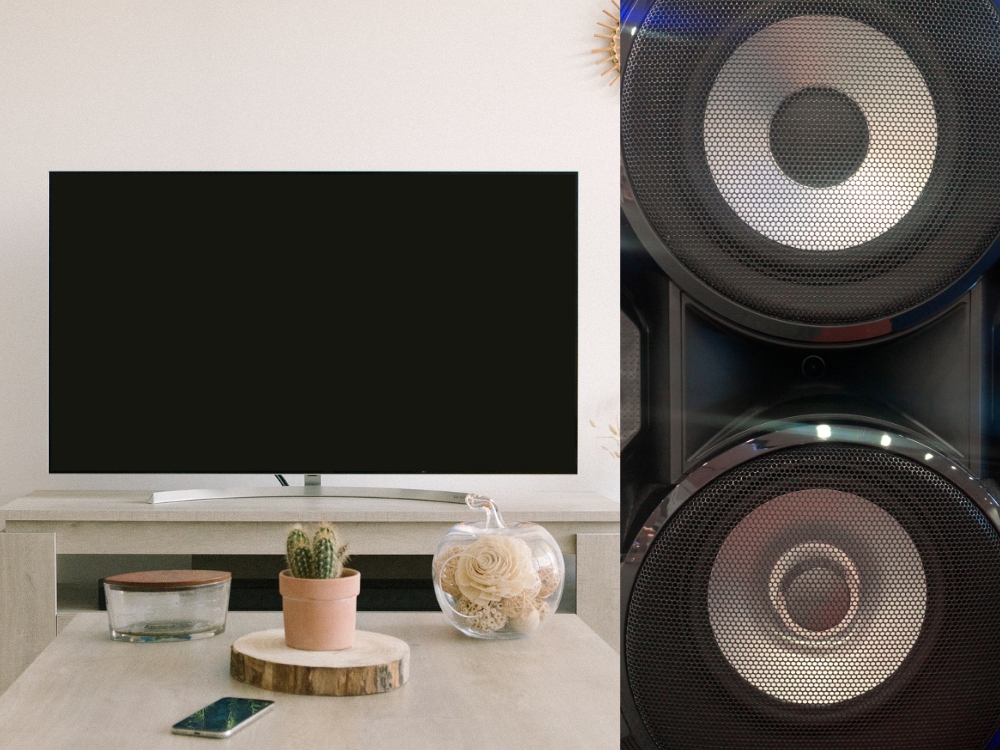Affiliate Disclaimer
As an Amazon Associate, we earn from qualifying purchases.
Are you looking for a better audio experience when watching your favorite movies or TV shows? Maybe you’ve heard about the high-quality sound reproduction of studio monitors and are wondering whether they can be used as TV speakers. In this article, we’ll answer the question “Can studio monitors be used as TV speakers?” and explore the compatibility, sound quality, and other factors you should consider before making a decision. Whether you’re an audio enthusiast or just looking to improve your home entertainment setup, read on to learn everything you need to know about using studio monitors as TV speakers.
Table of Contents
ToggleConnecting Studio Monitors as TV Speakers: How to Ensure Compatibility for the Best Audio Experience
Compatibility is one of the most important factors to consider when using studio monitors as TV speakers. Studio monitors and TVs may have different types of inputs and outputs, so it’s crucial to ensure they can be connected properly.
Studio monitors typically have balanced XLR or TRS inputs, while TVs usually have unbalanced RCA or 3.5mm inputs. To connect the two, you may need to use an adapter or converter to match the input and output types.
Another factor to consider is the power output of your studio monitors. Many studio monitors are powered, meaning they require a power source to operate. Some TVs may not have enough power to drive the monitors, so you may need to use an amplifier or audio interface to boost the signal.
To ensure compatibility between your studio monitors and TV, here are some tips to keep in mind:
Check the input and output types: Make sure you have the right cables and adapters to connect your studio monitors to your TV. Consider the power requirements of your studio monitors and whether you need an amplifier or audio interface to boost the signal.
Adjust the settings: Once you’ve connected your studio monitors to your TV, adjust the settings to optimize the audio quality. You may need to adjust the volume, EQ, or other settings to get the best sound.
Test the sound quality: Listen to music or watch a movie to test the sound quality of your studio monitors as TV speakers. If the sound is not satisfactory, you may need to make further adjustments or consider using different speakers.
By following these tips, you can ensure compatibility between your studio monitors and TV and get the best sound quality possible when using studio monitors as TV speakers.
The Truth About Studio Monitors as TV Speakers: How They Stack Up in Sound Quality
When it comes to sound quality, studio monitors and TV speakers are quite different. Studio monitors are designed to provide accurate and neutral sound, while TV speakers are tuned to enhance bass and other frequencies. This means that a studio monitor may not always be the best choice for watching movies or TV shows, depending on your personal preferences.
One of the key differences between studio monitors and TV speakers is the way they handle sound frequencies. Studio monitors are designed to reproduce sound as accurately as possible, without any artificial enhancements. This makes them ideal for mixing and mastering music, where you need to hear every detail of the recording.
On the other hand, TV speakers are designed to enhance certain frequencies, such as bass and treble, to make movies and TV shows sound more exciting. This is known as the “Hollywood sound” and is often characterized by booming bass and exaggerated sound effects.
While studio monitors can provide a more accurate and natural sound, they may not always be the best choice for watching movies or TV shows. This is because the “Hollywood sound” is what many people have become accustomed to, and they may find studio monitors to be too flat or dull in comparison.
That being said, there are times when studio monitors may be the better choice for watching movies or TV shows. For example, if you’re watching a movie or show with a lot of dialogue, studio monitors can make it easier to hear every word. This is because they reproduce sound more accurately, without the added bass and treble that can sometimes muddy the dialogue.
Additionally, if you’re watching content that has a lot of music, such as a concert or musical, studio monitors can provide a more natural and balanced sound. This is because they reproduce the music without any artificial enhancements or boosts to certain frequencies.
Volume Matters: Optimizing Your Studio Monitors as TV Speakers
I remember the first time I tried using my studio monitors as TV speakers. I was excited to see how the accurate sound quality of the monitors would enhance my favorite movies and TV shows. However, when I turned on the TV and started playing a movie, I quickly realized that the volume was not sufficient to fill the room. Even when I cranked up the volume on the monitors, it just wasn’t as loud as I wanted it to be.
I was disappointed that I couldn’t fully enjoy my viewing experience with the studio monitors, and it made me wonder if I had made the wrong choice. However, after doing some research and experimenting with different volume levels, I realized that the issue was not with the studio monitors themselves, but with the power output. I learned that studio monitors are designed for near-field listening, and may not have enough power to fill a large room.
To overcome this challenge, I tried moving the monitors closer to where I was sitting and increasing the volume on my TV. This helped to improve the listening experience and made it easier to enjoy my favorite movies and TV shows with the accurate sound quality of the studio monitors. It was a small adjustment, but it made a big difference in my overall enjoyment of the viewing experience.
From this experience, I learned the importance of understanding the power output of studio monitors and adjusting the volume accordingly. With the right knowledge and adjustments, it’s possible to achieve an optimal listening experience with studio monitors as TV speakers.
In Conclusion
As an avid movie watcher and sound engineer, I have always been interested in finding the best possible sound quality for both my studio and home theater. When I first discovered the possibility of using my studio monitors as TV speakers, I was excited to give it a try.
At first, I was hesitant, unsure if the sound quality would be good enough for a movie. But after some trial and error, I found that using studio monitors as TV speakers can indeed provide an incredible listening experience. The accurate and neutral sound quality was unmatched by any TV speakers I had used before, and I found myself noticing details in the sound that I had never heard before.
However, I also learned that it’s important to consider compatibility, sound quality, and volume when using studio monitors as TV speakers. By making some adjustments and understanding the differences between studio monitors and TV speakers, I was able to optimize the sound quality and volume to achieve a truly immersive viewing experience.
Although I did notice that the power output of my studio monitors wasn’t sufficient to fill the large living room, with some experimentation and adjustments, I was able to achieve a great listening experience.
Since then, my family and I have been using studio monitors as our go-to TV speakers, and we love it. The sound quality is unbeatable, and it has elevated our viewing experience to a whole new level. In conclusion, I highly recommend giving studio monitors as TV speakers a try, with some knowledge and adjustments to ensure the best possible experience. With a bit of effort, you can enjoy an immersive and exceptional sound experience for both your music and movies.
Enhance Your Monitoring Experience: Must-Have Accessories for Studio Monitors
Automate Your Studio Monitor Shutdowns and Save Energy
Reduce Vibrations and Improve Sound Quality
Protect Your Monitors from Vibrations and Enhance Performance
Keep Your Studio Environment Clean and Free of Dust and Allergens
Ensure Accurate and Consistent Sound Across Different Playback Systems






